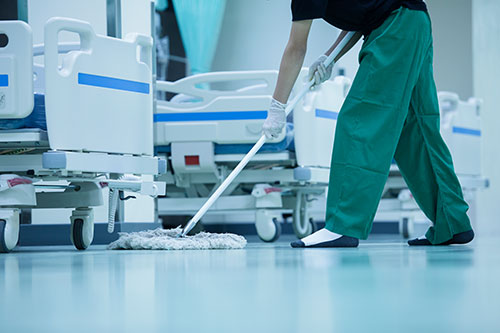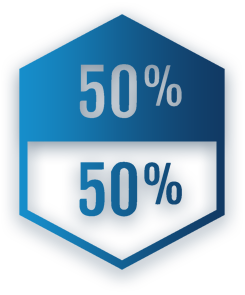NaDCC Tablets Are Better – Here’s Why
Antibiotic-resistant infections and pandemic outbreaks such as Coronavirus disease Sars-CoV-2 are increasing. It is critical to incorporate effective infection control programmes in medical and social environments to minimise the risk of cross-infections to patients, staff and visitors.
NaDCC EFFERVESCENT TABLETS – SIMPLY BETTER……

- 1 tablet in 1 gallon for general disinfection / 1 tab – 1 quart for Clostridium difficile & critical care
- Neutral pH
- Will not dull high-gloss floor finishes with repeated use

- Exact dosage every time – delivers accurate strength solution
- Eliminates “measure and pour” guesswork
- No dispensing equipment required
- Eliminates and controls odor

- Small tablet size
- Non-hazardous shipping
- Reduced packaging waste
- Saves on Storage, Shipping, Handling, Waste Minimization
NaDCC Tablets - One Infection Prevention Product for your Entire Facility
|
|
* when used in accordance with manufacturer’s instructions
NaDCC Tablet benefits

Unique Properties & Equilibrium Effect of NaDCC
- Dissolves in water to release HOCl – measured as available chlorine
- 50% of the total available chlorine exists as free available chlorine, the remainder is bound chlorine (NaDCC)
- In the absence of organic or microbial challenge, the ratio of free and bound available chlorine is approx. 50:50
- As free available chlorine is used up (e.g. organic matter, microorganisms etc.) the balance is disturbed -NaDCC releases available chlorine to restore chemical equilibrium to continue the disinfecting process.
In contrast, bleach and other hypochlorites exist mostly as free chlorine and do not possess a reservoir. In comparison with bleach, NaDCC possesses a reserve killing power that continues to be made available long after contact with microbes and organic material

More stable, longer shelf life
Lasts longer, goes further, less waste
- Longer shelf life before dilution than bleach – 2 – 5 years compared to 12 months for bleach
- NaDCC (sodium troclosene) retains killing power due to a 50:50 chemical equilibrium that continues to generate chlorine to replace that which is being used up in the process of destroying microorganisms or contact with organic loads. This means that it is not inactivated by dirt/cloths/organic matter as occurs with bleach.





